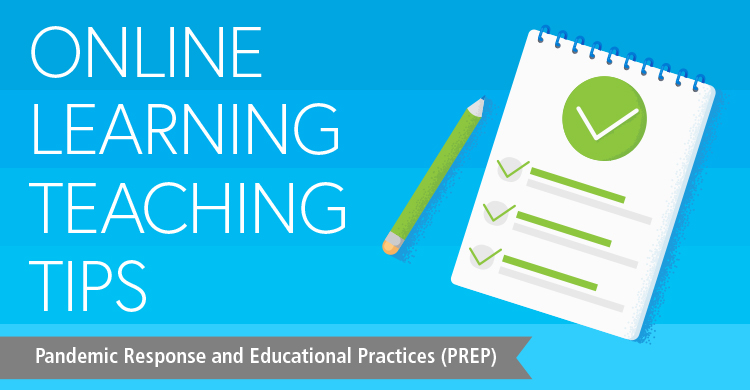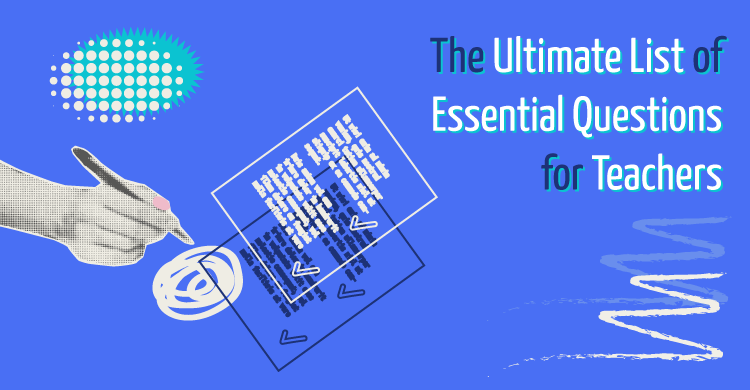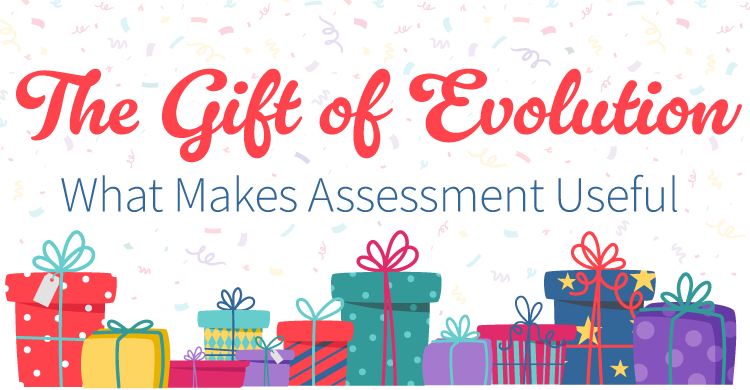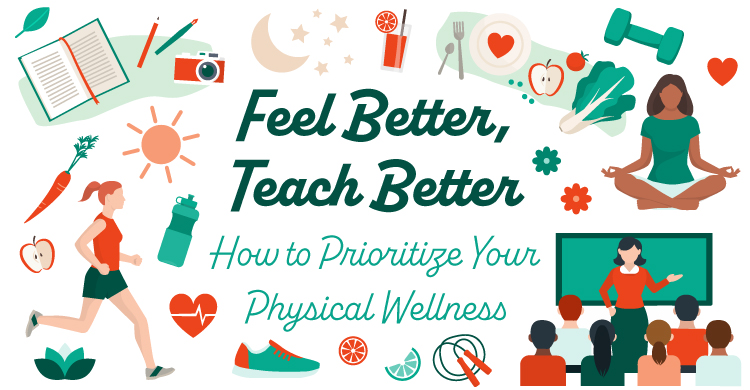This entry is the tenth in a blog series called Pandemic Response and Educational Practices (PREP), which aims to highlight and further the important work educators are doing amid the worldwide COVID-19 crisis.
Based on the upcoming title Rigorous Learning: Preparing Students for a Changing World
The COVID-19 pandemic has upended traditional schooling and created enormous challenges for teachers and schools as they shift to remote student learning. There are numerous difficulties in making this shift that include the adequacy and use of technology, physical isolation, self-management, the daily challenges faced by students and families, and the difficulties of teaching and learning online.
In this blog entry, we will look at some ways to soften and reduce the academic challenges of remote learning, and at the same time consider the use of teaching approaches that help prepare students for a changing world.
1. Focus and share learning goals
Students who are learning remotely need clarity as to what they are expected to learn and understand, what skills will be practiced and used, and what student work will be expected to be completed. Highly focused learning goals need to be shared and discussed with students, so they know and understand what is to be learned and what is expected of them. Some things to consider:
Focus learning around a few key ideas and understandings
If a teacher has too many varied, discrete goals, he or she makes it impossible for students to focus their learning and thus creates many difficulties for those learning remotely. Therefore, with online learning, it is important for teachers to decide on what’s really important for students to learn. Ask yourself: What ideas matter? What skills do my students most need to work on? What learning will help students the most? Then use your answers to clarify and focus learning. Limit goals to a few that are central and key. This helps students who are learning remotely to focus their learning and makes it more likely that they will engage in reaching clear goals.
For example, students who study World War II might focus on understanding how the war reshaped the role of the United States in world affairs. Biology students might focus on how living organisms depend on one another and their environments.
Be clear about the skills that will be learned and emphasized
Students learning remotely need to have clarity as to the skills they will be practicing and using as they learn. Six skill sets that might be potential focal points for learning are the following:
- How to develop understanding: Students learn how to create patterns and build relationships among information and data in order to explain ideas; develop concepts, theories, and principles; and propose hypotheses. They are able to put facts and information together into narratives, stories, timelines, concepts, and visual organizers such as charts and diagrams. They sort and categorize information and data. They compare and contrast. They form theories and examine and explain the evidence that supports them.
- How to research and inquire: Students learn how to search for information, ideas, and data to find answers. They use many approaches, including the latest technologies, to search for, read, and comprehend many different types of texts; find and evaluate information, ideas, and data; sort through and find the most useful information; and determine the most reliable and valid information and data.
- How to think at high levels: Students are able to think critically and creatively. They analyze, interpret, and draw conclusions. They represent information and quantitative data in graphic formats. They are able to pull together and synthesize information and ideas, form opinions backed by argument and evidence, learn how to solve complex problems, and think outside the box.
- How to communicate effectively: Students are able to communicate effectively in many different ways—by describing and explaining ideas, representing and sharing data and ideas in many different formats, participating effectively in discussions, developing arguments with claims and evidence, and creating and sharing oral and written presentations.
- How to collaborate: Students are able to work together as a team, as they conduct research, think critically and creatively, complete projects, and solve problems.
- How to apply and transfer learning to new situations: Students are able to apply and transfer information and ideas to new, novel, and real-life situations.
For example, students who learn how to take good notes by conceptualizing and highlighting important ideas, and have a good reading strategy to use, such as SQ3R (Survey, Question, Read, Recite, Review) will do better on reading and understanding tasks completed at home. Students who learn how to sort and classify information into concepts and ideas and conduct research effectively will become better conceptualizers and researchers. Students who are given the opportunity to practice and improve on writing essays, interpretations, and position papers (claims with evidence) will be learning important writing skills. Students who can practice analysis and synthesis skills will do better on distance-learning tasks that require high-level thinking.
Prioritizing which skills will be the focus of learning is helpful to students learning remotely. A social studies unit might focus on how to write a good position paper. English students might be asked to write a good interpretive essay. Science students might learn how to find science research articles on a particular topic and analyze them for their use of data and their objectivity.
Providing online models of the skills to be learned and practiced, such as examples of good notes, high-quality writing samples, and categorization examples give students a clear idea of what good skill work looks like and helps them know what to aim for in order to succeed.
Clarify expected student work
Students also need to know and understand what work they will be expected to complete and what criteria will be used to judge success. Teachers should share information about the types of writing assignments, performance tasks, end-of-project work, or other work students will be expected to be complete. If at all possible, teachers should share examples of expected student work that was completed successfully by other students, with an analysis of what made the work successful, and give students a chance to discuss and ask questions about the sample work.
2. Plan for student engagement
It is easier for students to learn at home if they are interested and curious about what they are learning, if learning is meaningful, and if students are actively engaged in the learning process. There are a number of ways to develop interesting, meaningful, engaging activities.
Compile and share a few compelling, essential, relevant questions as starting points for learning. Some examples:
- Who was the greatest president and why?
- How do nations resolve conflict without resorting to warfare?
- What is good art?
- How does measurement help us in everyday life?
- How do organisms interact and survive?
- How do we keep ourselves healthy?
- How has technology, past and present, changed lives?
- How can failure lead to success?
Rather than using a single source of information, like a textbook, have students conduct research online to find good articles, readings, and multimedia sources related to the goals of a unit of study.
Enable students to do self-selected, self-chosen activities as part of the learning process. Examples include:
- SSR—Sustained Silent Reading (time periods each day, such as a half-hour during which students read a book of their own choice)
- Passion projects selected by students, based on their interests (Bowersox, 2020)
- Students choose to do a project from among a set of teacher-developed project options related to a unit under study
- Students choose to respond to one end-of-unit essay question from among a potential group of questions shared by the teacher
- Integrate interesting, provocative readings, short videos, podcasts, and multimedia clips as part of the learning process; use them to provoke discussion
- Create assignments that enable students to comment on and discuss what is being learned, both orally and in writing
- Use “activators” as part of the initial stage of learning, and “summarizers” to help students summarize and synthesize what they are learning
Activators are designed for the teacher to diagnose and for students to recall prior knowledge and skills related to the goals of a unit, to pique student interest in the goals of a unit, and to establish a context for learning (Saphier and Haley, 1993). Some activator examples include:
- Brainstorm ideas about a topic to be studied (for example, “What do you think are the problems with the environment today?“).
- Use a 3-2-1 exercise: for example, list three things you already know about X, two things you’d like to know about or learn more about, and one question related to the key concept or learning.
- Draw a picture or diagram representing what you already know about this topic.
Summarizers provide students with frequent opportunities to integrate and synthesize ideas, make connections to previous learning, figure out what’s important, and reflect on what they have learned (Saphier and Haley, 1993b; Wormeli, 2005). They include activities such as:
- ABC (summarizing using the letters of the alphabet as starting points).
- Learning logs (five minutes of free writing about what they learned); draw a picture or diagram representing what was learned during a given period of time.
- 3-2-1 (for example, three main ideas you’ve learned, two key facts, and one question you still have).
- Online learning gives students the chance to learn at their own pace. For example, students can be asked to find explanations through technology to help them with their learning, such as through the Khan Academy. Teachers can also develop opportunities for students to create their own explanations and analyses of key understandings and ideas. Students can be provided with specific opportunities and times to practice key skills.
3. Help students manage online learning
Online learning can be difficult for many students, who now have to manage their own time, to make sure they have access to technology hardware and software, as well as to find a place to study. In order to help students, teachers can provide students with a set of questions to answer as they prepare to learn online:
- What technology are you using for your learning?
- Do you have regular access to technology?
- Do you have a regular place to learn and study? If not, can you find or develop a space for learning?
- If you need help, here is how you can contact me…
Based on the answers, teachers can provide individuals and groups of students with specific advice as to how to solve management issues.
It is also important to have students create and share a daily schedule that includes times to work on academic tasks, break and leisure times, and so on.
4. Promote a growth mindset and foster improved learning over time
Encouraging students to make the effort to improve their work is an important element in creating a growth mindset, and online learning provides opportunities to do this regularly. Some suggestions for promoting a growth mindset that encourages student effort to improve are the following (Tomlinson, 2012):
- Develop and share core target goals for improvement. Clarify what you want students to improve (for example, research skills, concept-development skills, argument writing). Be specific in what you would like to see as improvement, and share this information with students.
- Provide students with examples and characteristics of targeted good work. Share models of good student work along with their characteristics.
- Give students precise feedback and suggest specific ways for students to improve their work. Given the current level of student work, what precise feedback and specific suggestions for next steps will help students make improvements?
- Ask students to consider which components of feedback are useful and which are not, and ask them to develop plans for improvement.
- Don’t grade students through the improvement process.
It’s also important to provide praise that supports a student’s efforts to improve. For example, a comment on redone student work might look like this: “This work is so much better than what you did previously. I can see that you really worked hard to improve this, and it shows” (Dweck, 2007).
5. Give students a chance to work on open–ended assignments, tasks, questions, and projects for both learning and assessment
Open-ended assignments, sometimes called ambiguous assignments, consist of writing assignments, projects, and performance tasks that allow learners to develop their own thoughts and ideas and ways of expressing those ideas. Some examples include:
- Essays that call for an opinion or interpretation of literature
- Essays that call for making a judgment about a moral dilemma
- Performance tasks that ask students to apply what they have learned and now understand to a new or novel situation
- Project options related to a unit topic under study
- Position papers about a current or past issue or dilemma
- Responses to open-ended questions tied to a subject area (for example, what is good art? What is a good example and why?)
- Self-reflections that ask students to pull together and articulate thoughts and experiences and reflect on learning
Online learning can also accelerate a movement away from traditional multiple-choice/short answer assessments and toward open-ended assessments such as those described above. Rubrics should be used to help students understand what is expected of them and also help students understand how they can improve their work.
With internet capability, student work can be digitally created and placed electronically into portfolios. Portfolios showcase student work and help provide a comprehensive picture of student learning and growth over time (Renwick, 2017).
Finally, open-ended assignments, tasks, and questions can be useful in building a school and classroom online community. For example, one local Philadelphia high school is providing every student in the school with an online “schoolwide question of the week” that students think and write about. They then come together as a large community or in small clusters, at a certain time during the week, to share and discuss their responses to the question online together.
Examples of community writing prompts include the following:
- How are you managing during this pandemic? What is going well for you? What are your challenges?
- During this challenging time, what have you learned about yourself?
- How can our school community members best help each other during this pandemic time?
- What is one thing to do that might be interesting or unusual during this pandemic?
- What is your favorite book that you would like to share with others?
- What do you enjoy doing that you can’t do? That you can do?
- What is the first thing you plan to do after the quarantine is over?
- What makes for a great leader?
- When the pandemic ends, how will schools change?
- What are your hopes? What are your worries?
- What do you miss most?
- What are your favorite games? Hobbies? Things to do?
- What would you like to learn about?
- How can we all stay safe during the pandemic?
- Share one article that you’ve read about the pandemic that is useful and/or interesting.
6. Have students keep an online interactive notebook
Interactive notebooks have a dual purpose. First, students are taught how to record, collect, and organize information in traditional formats from a teacher, text, or other resources. Second, students are given thoughtful assignments that help them to make connections, conduct analyses, synthesize data in interesting ways, or become creative thinkers.
Practically, students can organize their interactive notebooks into several folders. One folder is for recording and collecting information in traditional ways. The other folder is for thoughtful, creative activities. Or students can organize folders according to readings or themes—some files within a folder are devoted to traditional note-taking and understanding activities, while other files reflect innovative, thoughtful, creative activities.
Teachers can periodically examine student notebooks online to determine the type and level of work students are doing. Teachers can also give students feedback on the work that they are doing in their notebooks and suggest improvements for the future.
7. Use the four phases of instruction as a planning tool
Online learning can be strengthened by planning long-term learning—units, projects, long-term activities—around four phases of instruction. In the first phase, teachers build student interest about the topic under study, engage students in initial activities to build interest and curiosity, and discover what students already know about the topic being studied. A second phase begins when students start to develop a knowledge-understanding base and learn and practice skills necessary to be successful. Third, when students reach a tipping point of knowledge, understanding, and skills, they move to less guided learning, more independent and deeper learning. Finally, there is the closure phase that leads to the sharing of completed work through presentations, exhibits, and other means. Below is a more detailed description of each stage.
Phase 1: Setting the stage
In this phase, students are given the opportunity to initially explore key understandings and essential questions to arouse their interest and curiosity. In some cases, students create their own meaningful goals and questions as the basis for learning. Teachers also initiate activities that create a context for learning and that also help to diagnose the background knowledge, understandings, and skills students bring to what is being studied. Tasks to be completed and other assessments are discussed and explained.
Phase 2: Building a foundation
During this phase, a teacher develops a basic foundation of understandings, skills, and habits of mind related to the topic under study. For example, students, with the help of the teacher, research information and ideas to help answer questions, develop key concepts and understandings, and practice key skills. Students are given many opportunities to find, evaluate, and process information through multiple source materials, which may include a textbook.
Students may learn how to read to understand key ideas, learn how to take notes, develop connections and relationships through sequencing and concept formation, create and explain narratives and timelines, and use other basic thinking strategies to develop foundational knowledge and understanding. They demonstrate their knowledge and understanding by explaining key ideas in their own words and developing interpretations of readings. They use and practice writing, reflection, and discussion skills that promote coherent thought, sharing of ideas, and listening and speaking skills.
Teachers can create and share videos with students that provide explanations of key ideas and model the use of key skills. Students may also receive specific feedback on drafts of their work to help them redo and improve their work.
Phase 3: Deepening learning
During this phase of instruction, students deepen their understanding of key concepts and ideas that they have already learned during the foundation-building phase. They are given opportunities to apply their already-developed skills in order to explain their reasoning, build and test concepts and theories, create interpretations, conduct analyses, think creatively, solve authentic problems, and complete essays, papers, position papers, presentations, and other student work. Much of this work during this phase is self-directed or with online peer collaboration, often with limited support and guidance from a teacher or coach.
Phase 4: Closure
During the closure phase, students are able to complete a product or products, demonstrate and explain what they have learned, make presentations, and share their work online with others.
Conclusion
Making the shift to distance learning is a challenging and difficult transition. The suggestions in this blog are designed to make the transition easier for teachers and for students by creating a clear focus for learning to be shared with students, planning for active learning and student engagement, helping students manage their learning environment, and using strategies and planning techniques that support effective online learning.
While the teaching suggestions here focus on supporting remote learning, which may be with us for some time to come, the ideas here are also useful for when students come together again in schools and classrooms. They are designed to promote a more rigorous, high level approach to teaching and learning that will better prepare students for living in a changing world.
Some additional helpful articles about how to teach online:
Seven Strategies for Supporting Student Learning in a Remote Environment
Seven Steps for Districts Navigating to Remote Learning
Restoring Connection: Real-Life Advice on Transitioning to Online Learning
Teaching Strategies of Award-Winning Online Instructors
References
Bowersox, Maegan. “Passion Projects Fuel Student-Driven Learning.” In ASCD Express, Volume 15, Number 17.
Dweck, Carol (2007). “The Perils and Promises of Praise.” In Educational Leadership, ASCD Journal, pp. 34–39.
Renwick, M. (2017). Digital Portfolios in the Classroom. Alexandria, VA: ASCD.
Saphier, J., and Haley, M. A. (1993a). Activators: Activity Structures to Engage Students’ Thinking Before Instruction. Research for Better Teaching.
Saphier, J., and Haley, M. A. (1993b). Summarizers: Activity Structures to Support Integration and Retention of New Learning. Research for Better Teaching.
Tomlinson, C. A. (September 2012). “One to Grow On/What Heather Taught Me.” In Educational Leadership, ASCD, pp. 88–89.






